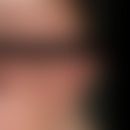Synonym(s)
HistoryThis section has been translated automatically.
Schulz, 1900; Ronchese, 1932
DefinitionThis section has been translated automatically.
Pili torti are not an independent disease with a single genetic defect, but a symptom that can occur in various genetic diseases. The genetic causes are therefore syndrome-dependent, with BCS1L, ATP7A and SPINK5 as frequently affected genes. Acquired forms of this hair malformation also occur. The hair is usually flattened and rotates at angles of 90°, 180° or 360° around its longitudinal axis. It is usually first observed in childhood.
You might also be interested in
EtiopathogenesisThis section has been translated automatically.
ManifestationThis section has been translated automatically.
Occurs mainly in girls with fine light hair, aged 2 to 5 years. A postpubescent variant, in which mental retardation occurs simultaneously, is described as Beare's syndrome.
LocalizationThis section has been translated automatically.
ClinicThis section has been translated automatically.
Circumscribed foci with peculiarly shimmering (due to different reflections of light in the twisted areas), twisted, dry, brittle, thin hairs that rarely grow longer than 4-6 cm. Aspect of circumscribed hypotrichosis. The eyebrows may also be affected. Accompanying keratosis follicularis is often present.Pili torti occurs in several genetic syndromes where different genes may be involved. Some known genetic causes are:
- Björnstad syndrome (BCS1L gene)Inheritance: autosomal recessive: combination of pili torti and sensorineural hearing loss.
- Menkes syndrome (ATP7A gene); inheritance: X-linked recessive; copper metabolism disorder with neurological symptoms and characteristic hair changes (including pili torti).
- Crandall syndrome: combination of pili torti, deafness and hypogonadism. The exact genetic defect is not clearly understood, but is probably genetic.
- Netherton syndrome (gene: SPINK5); inheritance: autosomal recessive. Trichorrhexis invaginata often occurs here, but occasionally also pili torti.
Also occurring in combination with Steatocystoma multiplex.
DiagnosisThis section has been translated automatically.
TherapyThis section has been translated automatically.
Note(s)This section has been translated automatically.
Most people experience sporadic hair twists, increasingly as a result of hair cosmetic procedures. Physiologically, they are found in underarm and genital hair.
Case report(s)This section has been translated automatically.
Kasutik (Davis CT et al. 2023):
A 25-year-old woman complained of dry, dull, short, sparse hair on the scalp.She was from a consanguineous marriage and had normal hair from birth, which gradually fell out and turned into short, brittle, dry, dull and sparse hair on the scalp since childhood. No neurological complaints, no hearing loss, no intellectual deficit or other known comorbidities. The patient had age-appropriate psychomotor development and was not undergoing any therapy.
On examination, she had short, thin, sparse hair on the scalp, no body hair and no eyelashes, but sparse eyebrow hair. Her oral cavity, teeth, nails and mucous membranes were normal and she was sweating normally. She had no other significant skin abnormalities.
Dermoscopy of her scalp showed thin, short, white and black disheveled and curled hairs on a background of normal eccrine openings and patchy hyperpigmentation. Each individual strand of hair showed flattening with a 180-degree twist under the light microscope. I
Laboratory:O.B.
Audiometry was normal. A scalp biopsy showed unremarkable epidermis with subepithelial sebaceous glands and occasional hair follicles with distorted anatomy without inflammation.
LiteratureThis section has been translated automatically.
- Beare JM (1952) Congenital pilar defect showing features of pili tori. Br J Dermatol 64:366-372.
Davis CT et al. (2023) Isolated Pili Torti: A Rare Case Revisited. Indian J Dermatol. 2023 Jan-Feb;68(1):124.
- Dishop MK et al. (2009) Pathologic changes of skin and hair in ankyloblepharon-ectodermal defects-cleft lip/palate (AEC) syndrome. Am J Med Genet A.149A:1935-1941
- Pietrzak A et al. (2015) Steatocystoma multiplex with hair shaft abnormalities. J Dermatol doi: 10.1111/1346-8138.12837
- Ronchese F (1932) Twisted hairs (pili torti), Arch Derm Syph 26: 98-108
- Srinivas SM et al.(2013) Nethertonsyndrome with pili torti. Int J Trichology 5:225-226
Incoming links (18)
Acquired progressive hair curvature; Beare syndrome; Björnstad syndrome; Brown falco-landthaler syndrome; Comel-netherton syndrome; Curly hair acquired; Curly hair nevus; Ectodermal dysplasia ; Hair shaft anomalies (overview); Hypotrichosis congenita hereditaria marie unna; ... Show allOutgoing links (8)
Björnstad syndrome; Ectodermal dysplasia ; Hypotrichosis; Keratosis pilaris; Menkes syndrome; Monilethrix; Netherton syndrome; Steatocystoma multiplex;Disclaimer
Please ask your physician for a reliable diagnosis. This website is only meant as a reference.








